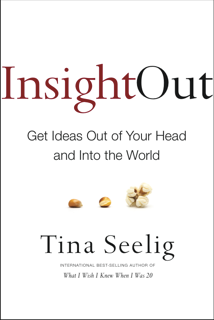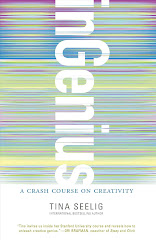It’s a crime not to teach young
people to be creative and entrepreneurial. We’re each responsible for
building our own lives and for repairing the broader problems of the
world, and the only way to do so is with the knowledge, skills, and
attitudes required to bring ideas to fruition.
Unfortunately,
most formal education deals with memorization as opposed to innovation.
It focuses on learning about heroes as opposed to teaching students to
be heroic. And it presents problems with one right answer as opposed to
real-life challenges with an endless number of viable solutions.
Many
people believe that you can’t teach those skills, and define themselves
and others as “not creative.” They see the skills related to innovation
and entrepreneurship as inborn traits, such as eye or hair color, that
can’t be changed. This is untrue! These skills can certainly be learned,
and it behooves us to teach people of all ages to be entrepreneurial, enabling them to invent the world in which they want to live.
Why do people think that you can’t teach creativity and entrepreneurship? It stems from the lack of a clear vocabulary and a process for moving from inspiration to execution.
When
I ask people in any setting, from a classroom to a corporate office, to
define creativity, I get a range of responses. Most people start with
“To me creativity is . . .” And the most common completion of this phrase is “thinking outside the box.” This cliché phrase is meaningless.
In reality, creativity requires a complex set of knowledge, skills, attitudes, and actions, just like other domains, including math, science, music, and baseball. In order to harness our creativity, we need a robust set of definitions for all parts of the creative process.
After
years immersed in this field, teaching courses on creativity and
entrepreneurship at Stanford School of Engineering, I’ve crafted a
framework to help anyone learn the skills needed to consistently move
through the creative process.
To begin, there is a hierarchy of skills, starting with imagination:
Imagination leads to creativity.
Creativity leads to innovation.
Innovation leads to entrepreneurship.
This
scaffolding of skills can be compared to those involved with reading
and writing: Babies naturally babble, making noises to communicate. They
learn how to harness those noises and combine them to form words. They
then learn to connect words to compose sentences, and then combine those
sentences to craft stories. Educators take great care to teach all the
foundational skills along the way, including vocabulary, grammar,
reading, and writing.
Below is a parallel set of definitions and relationships for moving from imagination to entrepreneurship. I call this the Invention Cycle.
The Invention Cycle
- Imagination is envisioning things that do not exist.
- Creativity is applying imagination to address a challenge.
- Innovation is applying creativity to generate unique solutions.
- Entrepreneurship is applying innovation, to bring unique ideas to fruition, inspiring others’ imagination.
This
framework is relevant to start ups and established firms, as well as
innovators of all types where the realization of a new idea — whether a
product, service, or work of art — results in a collective increase in
imagination. Consider how platforms such as the iPhone, crayons, and
even the kitchen stove have unleashed the imagination and creativity of
millions of people who have been inspired by the possibilities they
unlock; and how leaders of any organization, from a football team to a
research team, can inspire the imagination of compatriots. An
entrepreneurial spirit infects others, leading to wave upon wave of
imagination, creativity, innovation, and entrepreneurship.
By
learning how to harness your own Invention Cycle, you identify more
opportunities, challenge more assumptions, generate unique solutions,
and bring more ideas to fruition. These powerful tools will help you
chart a path toward the life you want to lead.





1 comment:
I like to think in terms of Nietzsche’s “The Three Metamorphoses of the Spirit” from Zarathustra. It begins: "I will tell you of the three metamorphoses of the spirit: how the spirit becomes a camel; the camel, a lion; and the lion then a child."
The camel takes on the load of its culture. It then runs out into the desert where it becomes a lion whose task it is to kill the dragon whose name is “Thou shalt;” to destroy the culture it has mastered. Then it is time to create anew, and this is the task of the child. But, Nietzsche says, before you create the world anew, you must create your Self. -- John Lobell
Post a Comment